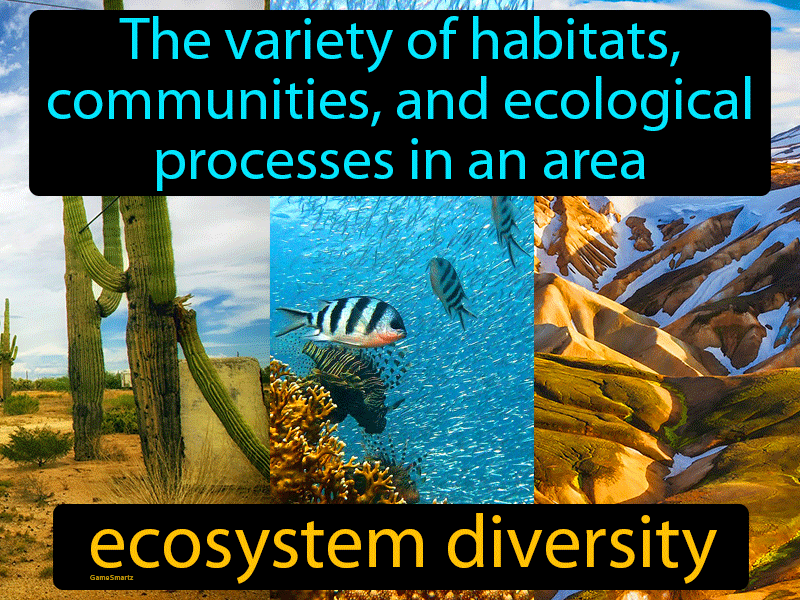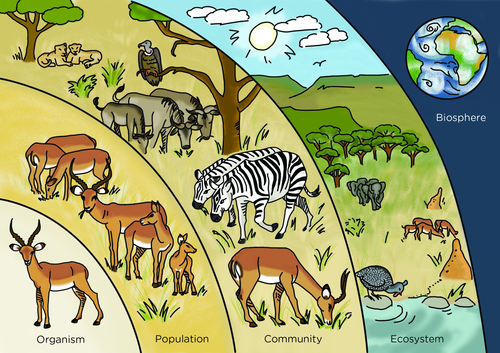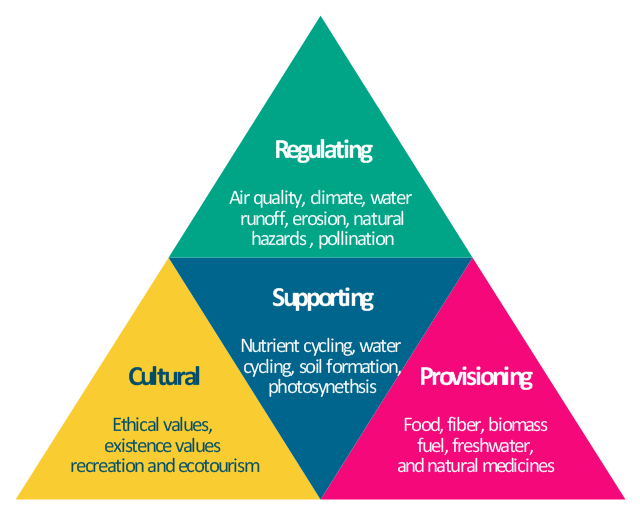Topic what is an ecosystem example: Explore the marvels of nature as we delve into vivid examples of ecosystems, showcasing the dynamic interplay of life and environment.
Table of Content
- What are some examples of terrestrial and aquatic ecosystems?
- Understanding Ecosystems: Definition and Importance
- Types of Ecosystems: Terrestrial and Aquatic Examples
- Case Study: Tropical Rainforest Ecosystems
- Case Study: Coral Reef Ecosystems
- YOUTUBE: What is an Ecosystem: 10 Examples
- Case Study: Desert Ecosystems
- Case Study: Freshwater Ecosystems - Lakes and Rivers
- Case Study: Grassland Ecosystems
- Human Impact on Ecosystems: Challenges and Solutions
- Conservation Efforts: Protecting and Restoring Ecosystems
- The Role of Biodiversity in Ecosystem Health
- Future Directions: Ecosystem Research and Monitoring
What are some examples of terrestrial and aquatic ecosystems?
Terrestrial ecosystems and aquatic ecosystems are two main types of ecosystems, each with their own unique examples:
- Terrestrial Ecosystem Examples:
- Desert Ecosystem: Examples include the Sahara Desert in Africa and the Mojave Desert in North America.
- Forest Ecosystem: Examples include the Amazon Rainforest in South America and the Taiga forest in Russia.
- Grassland Ecosystem: Examples include the African Savanna and the North American Prairie.
- Tundra Ecosystem: Examples include the Arctic tundra in the Northern Hemisphere and the Alpine tundra in mountainous regions.
- Aquatic Ecosystem Examples:
- Marine Ecosystem: Examples include the Great Barrier Reef in Australia and the deep-sea hydrothermal vents.
- Freshwater Ecosystem: Examples include lakes such as the Great Lakes in North America and rivers like the Amazon River in South America.
- Estuarine Ecosystem: Examples include the Chesapeake Bay on the east coast of the United States and the Sundarbans in Bangladesh.
- Coral Reef Ecosystem: Examples include the Red Sea coral reef and the Florida Keys coral reef.
READ MORE:
Understanding Ecosystems: Definition and Importance
An ecosystem is a complex network where living organisms, their environment, and the interactions between them coexist in a specific area. It encompasses both biotic (living) and abiotic (non-living) components, working together to form a stable and balanced system. Ecosystems are fundamental to Earth"s biodiversity, supporting various life forms through intricate relationships that sustain both the organisms within them and the planet as a whole.
- Biotic Components: These include all living entities in an ecosystem, such as plants, animals, fungi, and microorganisms. They play critical roles in energy flow and nutrient cycles.
- Abiotic Components: Non-living factors like water, air, soil, and climate conditions influence the living conditions and survival of biotic elements within the ecosystem.
Ecosystems are essential for numerous reasons:
- They provide ecosystem services that are crucial for survival, including clean water, air, and soil fertility.
- They contribute to climate regulation through carbon storage and energy exchange processes.
- They offer biodiversity, which is vital for resilience and adaptability of life forms to changing conditions.
- Understanding ecosystems allows us to appreciate the delicate balance of nature and the importance of conserving diverse habitats for future generations.
Recognizing the interdependence of organisms and their environment highlights the critical role ecosystems play in sustaining life on Earth. It underscores the need for concerted conservation efforts to protect these invaluable natural systems against threats like habitat destruction, pollution, and climate change.
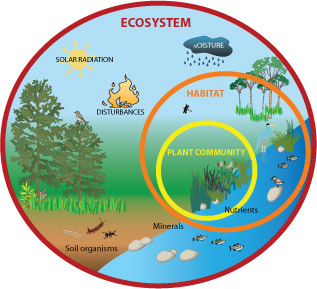
Types of Ecosystems: Terrestrial and Aquatic Examples
Ecosystems are broadly categorized into two main types: terrestrial and aquatic. Each type hosts unique habitats, species, and interactions that define the complexity and beauty of nature"s networks.
Terrestrial Ecosystems
Terrestrial ecosystems are found on land and are characterized by the type of vegetation and climate in the area. They include:
- Forests: Ranging from tropical rainforests to temperate deciduous forests, these ecosystems are dense with trees and rich in biodiversity.
- Deserts: Known for their extreme aridity, deserts support life adapted to harsh conditions with minimal rainfall.
- Grasslands: Dominated by grasses, these areas can be found in regions where there is not enough rain for large forests but too much for deserts.
- Tundra: Characterized by cold temperatures and short growing seasons, the tundra is found in high latitudes and altitudes.
- Mountain: These ecosystems vary dramatically over short distances due to changes in altitude, slope, and exposure.
Aquatic Ecosystems
Aquatic ecosystems are those that occur in bodies of water and are classified based on their salinity into freshwater, marine, and brackish ecosystems.
- Freshwater: Including lakes, rivers, streams, and wetlands, freshwater ecosystems are home to a vast array of species adapted to living in water with low salt concentrations.
- Marine: Oceans, seas, coral reefs, and estuaries make up marine ecosystems, characterized by high salt content. They are incredibly diverse and include some of the world"s most critical habitats.
- Brackish: These are transitional areas where freshwater and marine waters mix, such as in mangroves and salt marshes, providing unique and productive ecosystems.
Understanding the diversity within these ecosystems is crucial for conservation efforts and for appreciating the complexity of life on Earth. Each ecosystem plays a vital role in maintaining ecological balance and supports a variety of life forms that are interdependent.
Case Study: Tropical Rainforest Ecosystems
Tropical rainforests are among the most vibrant and complex ecosystems on Earth, teeming with a diverse array of flora and fauna. These ecosystems are characterized by high rainfall, with annual precipitation often exceeding 2,000 mm, and constant warm temperatures, fostering an environment rich in biodiversity.
- Location: Tropical rainforests are found in the equatorial zone, within 10 degrees north and south of the equator. Key locations include the Amazon basin in South America, the Congo basin in Africa, and Southeast Asia, including parts of Indonesia and Papua New Guinea.
- Flora and Fauna: These ecosystems are home to over half of the world’s plant and animal species. They feature towering trees, such as the emergent, canopy, understory, and forest floor layers, each hosting unique species adapted to their specific environment.
- Biodiversity Hotspots: Tropical rainforests are biodiversity hotspots, crucial for the survival of countless species, including many endemic and endangered species. Iconic animals include jaguars, orangutans, gorillas, and an incredible variety of birds, insects, and reptiles.
- Ecosystem Services: They play a critical role in regulating the global climate by absorbing large amounts of CO2, producing oxygen, and maintaining the water cycle through transpiration. Rainforests also provide resources such as timber, medicinal plants, and fruits.
- Threats: Despite their importance, tropical rainforests face significant threats from deforestation, mainly due to logging, agriculture, and mining. This leads to habitat loss, species extinction, and contributes to climate change.
- Conservation Efforts: Efforts to conserve tropical rainforests include protected areas, sustainable management practices, and international agreements aimed at preserving biodiversity and mitigating climate change impacts.
Tropical rainforests are indispensable to the health of our planet, offering invaluable ecological services, supporting an astonishing diversity of life, and playing a key role in the livelihoods of indigenous communities. The preservation of these ecosystems is crucial for biodiversity conservation, climate stability, and the well-being of humanity.

Case Study: Coral Reef Ecosystems
Coral reef ecosystems, often referred to as the "rainforests of the sea," are among the most diverse and valuable ecosystems on Earth. They are built by colonies of tiny animals found in marine waters that contain few nutrients. Despite covering less than 1% of the ocean floor, coral reefs are home to approximately 25% of all marine species, including fish, mollusks, worms, crustaceans, echinoderms, sponges, and many others.
- Location: Coral reefs are predominantly found in shallow, warm waters of the tropics and subtropics. The Great Barrier Reef off the coast of Australia, the Belize Barrier Reef in the Caribbean, and the Red Sea Coral Reef are some of the most well-known examples.
- Biodiversity: These ecosystems support a wide range of marine life, offering shelter, breeding grounds, and food. Coral reefs are crucial for the survival of many marine species and maintain marine biodiversity.
- Ecosystem Services: Beyond biodiversity, coral reefs protect coastlines from erosion and storm surge, support fishing and tourism industries, and are a source of new medicines. They are integral to the cultural and economic well-being of many coastal communities.
- Threats: Coral reefs are facing unprecedented threats from climate change, overfishing, destructive fishing practices, coral mining, pollution, and coastal development. These stresses lead to coral bleaching and can result in the loss of reef structure and function.
- Conservation Efforts: Conservation and restoration efforts include establishing marine protected areas, regulating fishing practices, reducing pollution, and initiatives to restore damaged reefs through coral transplantation.
The preservation of coral reef ecosystems is critical for maintaining marine biodiversity, supporting livelihoods, and protecting coastal communities. Efforts to understand, protect, and restore these ecosystems are essential in sustaining their benefits for future generations.
What is an Ecosystem: 10 Examples
Ecosystem: \"Delve into the fascinating world of ecosystems and uncover the intricate web of connections between living organisms and their environment. Discover the beauty and importance of biodiversity in sustaining life!\" Biology: \"Embark on a journey of discovery with biology as we unravel the mysteries of life itself. From cells to genetics, explore the wonders of the natural world and gain a deeper understanding of how living organisms function.\"
Ecosystem Definition and Example in Biology
Join this channel to get access to perks: https://www.youtube.com/channel/UCq1EXFAsOSEuaDU9nICu8QQ/join Ecosystem ...
Case Study: Desert Ecosystems
Desert ecosystems, characterized by their extreme dryness, sparse vegetation, and wide temperature variations, cover about one-fifth of Earth"s surface. Despite their harsh conditions, deserts are biologically rich habitats with a diverse array of life adapted to survive in an environment with limited water and nutrients.
- Location: Deserts are primarily located in the subtropical regions, with famous examples including the Sahara in North Africa, the Arabian Desert in the Middle East, the Gobi in Asia, and the Mojave in North America.
- Adaptations: Flora and fauna in desert ecosystems have developed unique adaptations to cope with the lack of water and extreme temperatures. Plants such as cacti store water in their thick tissues, while animals like camels can survive long periods without water.
- Biodiversity: Despite the challenging conditions, deserts are home to a wide variety of life, including reptiles, birds, insects, and mammals. Many species are endemic, existing only in specific desert environments.
- Ecosystem Services: Deserts play a crucial role in regulating climate and air quality. They act as carbon sinks, offer recreational opportunities, and their plants and animals are sources of food, medicine, and other resources for indigenous and local communities.
- Threats: Desert ecosystems face threats from climate change, which can alter precipitation patterns and increase desertification, as well as from human activities like unsustainable land use and water management practices.
- Conservation Efforts: Efforts to protect desert ecosystems include establishing protected areas, promoting sustainable land and water use practices, and restoring degraded habitats to preserve biodiversity and ecosystem services.
Deserts are not barren wastelands but vibrant ecosystems full of life and beauty. They remind us of the resilience of life under the most extreme conditions and the importance of conserving these unique landscapes for future generations.
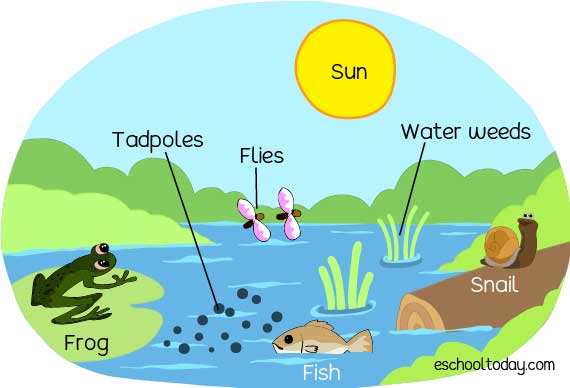
Case Study: Freshwater Ecosystems - Lakes and Rivers
Freshwater ecosystems, encompassing lakes and rivers, are vital components of the Earth"s environmental system, supporting a rich diversity of life and providing essential services to human society. These ecosystems are crucial for biodiversity, supplying water for drinking, agriculture, sanitation, and industry.
- Characteristics: Lakes are large, still bodies of freshwater, while rivers are flowing watercourses that may empty into a lake, sea, or ocean. Both are home to distinct communities of plants, animals, and microorganisms adapted to aquatic life.
- Biodiversity: Freshwater ecosystems host a wide array of species, from plankton, which form the base of the food web, to larger fish, amphibians, reptiles, birds, and mammals. Many species are endemic, depending solely on these water bodies for their survival.
- Ecosystem Services: They regulate water cycles, purify water, mitigate floods, support fisheries, provide recreational opportunities, and have cultural and spiritual significance for many communities.
- Threats: Pollution, overfishing, invasive species, dam construction, and water withdrawal pose significant threats to these ecosystems, affecting water quality and quantity, disrupting habitats, and endangering species.
- Conservation Efforts: Protecting freshwater ecosystems involves pollution control, sustainable water management, habitat restoration, protection of endangered species, and the establishment of protected areas and buffer zones around critical habitats.
The health of freshwater ecosystems is intimately linked to the well-being of humans and the planet. Preserving lakes and rivers is not only about conserving biodiversity but also about maintaining the environmental processes that sustain life on Earth.
Case Study: Grassland Ecosystems
Grassland ecosystems, characterized by vast open spaces filled with grasses, herbs, and shrubs, play a crucial role in supporting biodiversity and providing ecosystem services. They are found across the world, from the prairies of North America to the savannas of Africa and the steppes of Asia, each supporting a wide array of plant and animal life.
- Characteristics: Grasslands are defined by their dominant vegetation—grasses, with trees and large shrubs typically absent or minimal. They can be divided into temperate grasslands, which experience cold winters and warm summers, and tropical grasslands, which experience warm temperatures year-round.
- Biodiversity: These ecosystems are home to a variety of wildlife, including large herbivores such as bison, antelope, zebras, and elephants, as well as predators like lions and wolves. Grasslands also support numerous bird species, insects, and a rich diversity of plant life.
- Ecosystem Services: Grasslands contribute to soil formation and protection, carbon sequestration, water filtration, and are important for agriculture, supporting grazing and the cultivation of crops. They are also vital for cultural and recreational activities.
- Threats: Grasslands face threats from conversion to agriculture, urban development, overgrazing, invasive species, and climate change. These pressures can lead to habitat loss, soil degradation, and a decline in biodiversity.
- Conservation Efforts: Conservation strategies include sustainable land management practices, the establishment of protected areas, restoration projects to recover degraded grasslands, and efforts to maintain the natural fire regimes that many grassland ecosystems depend on.
Grassland ecosystems are essential for their ecological, economic, and cultural values. Preserving these landscapes ensures the continuation of their biodiversity, supports livelihoods, and maintains the ecological processes vital for our planet.
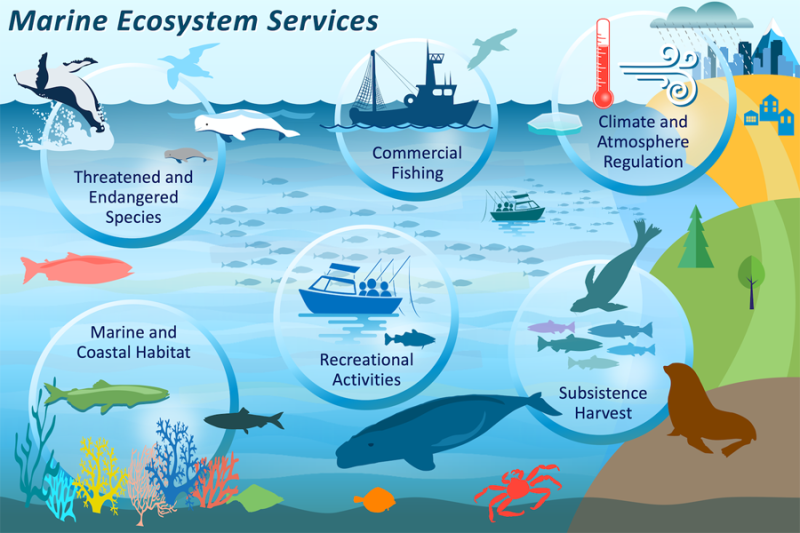
Human Impact on Ecosystems: Challenges and Solutions
Human activities have significantly impacted ecosystems worldwide, leading to habitat destruction, biodiversity loss, pollution, and climate change. However, with increasing awareness and effort, there are solutions and strategies being implemented to mitigate these impacts and protect the natural world.
- Deforestation: The clearing of forests for agriculture, logging, and urban development reduces biodiversity and disrupts carbon and water cycles. Solutions include promoting sustainable forestry practices, reforestation projects, and supporting products certified for their eco-friendly production methods.
- Pollution: Water, air, and soil pollution from industrial, agricultural, and urban sources harm wildlife and ecosystems. Solutions involve reducing emissions, improving waste management, utilizing cleaner energy sources, and enforcing stricter pollution controls.
- Climate Change: Caused by greenhouse gas emissions from human activities, climate change affects ecosystems through rising temperatures, changing precipitation patterns, and more frequent extreme weather events. Solutions include reducing carbon footprints, enhancing renewable energy use, and implementing adaptation strategies for vulnerable ecosystems.
- Overexploitation: Overfishing, hunting, and resource extraction exceed the natural regeneration capacity of ecosystems. Sustainable management practices, conservation laws, and protected areas are crucial for maintaining ecological balance.
- Invasive Species: The introduction of non-native species can disrupt local ecosystems, outcompeting or preying on native species. Solutions include preventing the spread of invasive species, controlling their populations, and restoring native habitats.
- Habitat Fragmentation: The division of ecosystems into smaller, isolated fragments due to roads, urban development, and agriculture impacts species migration, breeding, and survival. Creating wildlife corridors and protecting large continuous areas of habitat can mitigate these effects.
Addressing the challenges posed by human impacts on ecosystems requires a multifaceted approach, involving policy changes, technological advancements, and individual actions. By fostering a sustainable relationship with the environment, we can ensure the health and resilience of ecosystems for future generations.
Conservation Efforts: Protecting and Restoring Ecosystems
Conservation efforts worldwide aim to protect and restore ecosystems to ensure biodiversity, ecological balance, and the continuation of essential services that nature provides to humanity. These efforts range from local initiatives to global agreements, involving various stakeholders, including governments, NGOs, communities, and individuals.
- Protected Areas: Establishing national parks, nature reserves, and marine protected areas to safeguard habitats and species from human activities. These areas are crucial for conserving biodiversity, studying ecosystems, and maintaining natural processes.
- Restoration Projects: Initiatives such as reforestation, wetland restoration, and coral reef rehabilitation aim to restore degraded ecosystems, enhancing their capacity to support wildlife and provide ecosystem services.
- Community Involvement: Engaging local communities in conservation efforts ensures the sustainability of these initiatives. Community-based conservation can include sustainable resource management practices, eco-tourism, and educational programs.
- Sustainable Practices: Promoting sustainable agriculture, forestry, and fishing practices reduces environmental impacts and supports the regeneration of natural resources. This includes practices like agroforestry, sustainable harvesting, and the use of less harmful fishing techniques.
- Legislation and Policies: Implementing and enforcing environmental laws and policies at national and international levels to protect endangered species, regulate emissions, and manage natural resources sustainably.
- International Agreements: Global agreements such as the Convention on Biological Diversity (CBD), the Paris Agreement on climate change, and the Ramsar Convention on Wetlands aim to coordinate international efforts for environmental conservation and sustainable development.
Conservation efforts are essential for the protection and restoration of ecosystems, combating the loss of biodiversity, and addressing the impacts of climate change. By investing in these efforts, we can ensure a healthy planet for future generations, maintaining the diversity of life and the natural systems upon which all species, including humans, depend.
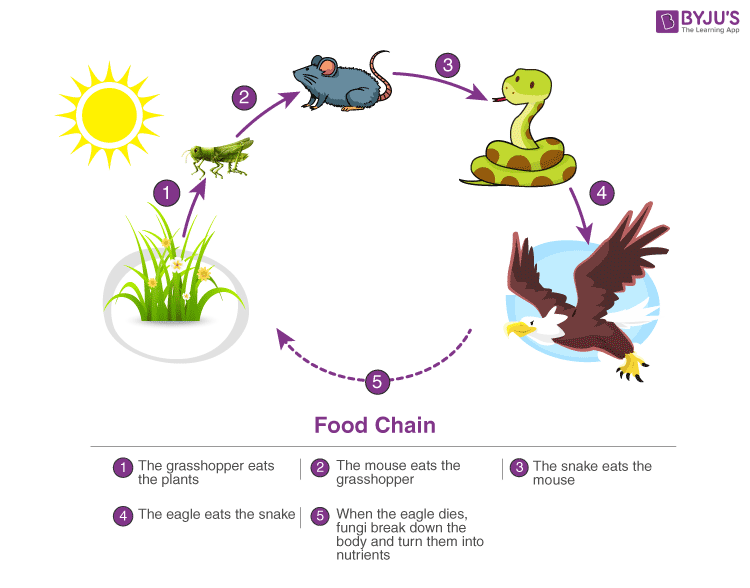
The Role of Biodiversity in Ecosystem Health
Biodiversity, the variety of life in all its forms and interactions, is a fundamental component of ecosystem health, resilience, and functionality. The richness of species and genetic variation within ecosystems is crucial for maintaining ecological processes and services that humans and all other life forms rely on.
- Supports Ecosystem Services: Biodiversity underpins ecosystem services such as pollination, seed dispersal, water purification, nutrient cycling, and climate regulation. These services are essential for human survival, supporting agriculture, fisheries, and providing clean air and water.
- Enhances Resilience: Diverse ecosystems are more resilient to disturbances like natural disasters and climate change. A greater variety of species ensures that some can maintain ecosystem functions even when others are affected.
- Promotes Productivity: Ecosystems with higher biodiversity tend to have greater productivity, meaning they can produce more biomass which supports more life. This is because different species often use resources in slightly different ways, leading to more efficient overall resource use.
- Disease Regulation: Biodiversity plays a crucial role in regulating diseases. Diverse ecosystems can limit the spread of pathogens and pests, reducing the impact of disease on agriculture and human populations.
- Genetic Resources: Genetic diversity within and between species is vital for adaptation to changing conditions, providing the raw material for species to evolve. This genetic wealth is crucial for breeding programs, agriculture, and medicine.
The health and stability of ecosystems are deeply intertwined with their biodiversity. Protecting and enhancing biodiversity is not just about conserving wildlife; it"s about ensuring the long-term viability of the planet"s life support systems. As such, biodiversity is both a measure of ecosystem health and a goal of conservation efforts, underscoring the interconnectedness of life on Earth.
READ MORE:
Future Directions: Ecosystem Research and Monitoring
The future of ecosystem research and monitoring is poised to leverage advancing technology and interdisciplinary approaches to deepen our understanding of ecosystems and their responses to environmental changes. This evolving field is critical for informing conservation strategies, policy decisions, and sustainable management practices to ensure the resilience and health of ecosystems worldwide.
- Advanced Technologies: Utilizing remote sensing, drones, satellite imagery, and AI to gather and analyze data on ecosystem changes, biodiversity, and the impacts of climate change. These technologies allow for real-time monitoring and predictive modeling at scales previously unattainable.
- Genomic Tools: Employing genomic and bioinformatics tools to understand the genetic diversity within species, their evolutionary adaptations, and interactions within ecosystems. This genetic insight is crucial for conservation and restoration efforts.
- Citizen Science: Engaging the public through citizen science projects to collect data on species distribution, phenology, and ecosystem health. This approach expands data collection efforts and fosters a greater connection between people and the natural world.
- Interdisciplinary Research: Integrating knowledge from ecology, climatology, sociology, economics, and other disciplines to address complex environmental challenges. Understanding the socio-economic impacts of ecosystem changes is essential for effective policy and management.
- Global Collaboration: Strengthening international collaboration to share data, research findings, and conservation strategies. Ecosystems are interconnected across the globe, and coordinated efforts are necessary to address transboundary environmental issues.
As we move forward, ecosystem research and monitoring will play a pivotal role in guiding actions to protect and restore ecosystems in the face of global environmental change. Embracing innovative technologies, fostering collaboration, and integrating diverse knowledge systems are key to navigating the challenges ahead and securing a sustainable future for our planet"s ecosystems.
Exploring the intricate tapestry of ecosystems reveals the beauty and complexity of our planet. Join us in discovering the wonders of nature, understanding the challenges it faces, and taking action towards a sustainable future for all life on Earth.




